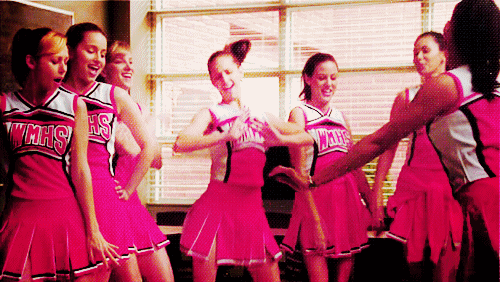Google Docs can’t solve everything.
In fact, Google Docs created the most disorganized group project I’ve ever experienced. It was fall semester of junior year, and I was taking one of my first upper-level communication courses. I received the “final draft” of our annotated bibliography the midnight before our deadline, four hours late, supposedly ready for a light final edit. Because of my early tutoring shift the next morning, I was anxious to get some sleep. I sat down at my desk, teeth minty and freshly brushed, to download the file… only to find half the annotations had been directly copied from the articles. In other words, I had about six pages of plagiarism on my hands. Cue three hours of rewriting.
I grumbled my way through the revisions into the wee hours of the morning with a pretty black heart, wondering how anyone could make it to college not knowing that bibliographies are organized alphabetically by author’s last name. But I realized over the course of the semester, through unrehearsed presentations, exhaustively long message threads and duplicated work, that we weren’t having trouble with the project because our group was composed of idiots. We’d just started off on the wrong structural foot.
1. Start off Face to Face

The Internet’s cache of group project tips and tricks agrees: communication matters. College Candy emphasizes regularly checking in with group members and addressing slacker behavior early, while USA Today suggests volunteering to lead so you can personally make sure things stay organized.
The fact is, your group members probably hate group work just as much as you do. Sure, every group has that slacker (ours did, and on busy weeks, sometimes that slacker was me). But don’t start off suspecting your teammates; instead, start off with structure and organization. Communicate your schedules in advance, assign roles, get everyone’s contact information—and make sure everyone has written all of this information down. Consider scheduling a reoccurring meeting time and spot each week–every Monday at 10am in the computer lounge–to set expectations from the very beginning. This will prevent confusion and help you dodge a lot of potential hard feelings.
2. To Keep Things Together, Brainstorm Together

A group project begun on the right note can be a beautiful thing. For my writing center training class, we had to create “some kind of multimedia” presentation that could be on “anything related to the writing center.” Pretty vague, right? Vague assignments are often a group project death knell, but because we sat down with each other one afternoon just to brainstorm, we came up with an awesome four-minute video, complete with Dirty Dancing soundtrack, that interviewed students who’d used writing center services.
It was pretty classy, if I may say so myself. Most amazingly, we ended up friends at the end of the project, despite barely knowing each other’s names when we first sat down to work.
3. Communicate Online… Wisely

Confession: We did use Google Docs for our writing center video. But carefully—to supplement in-person meetings, not to replace them. It wasn’t necessary to meet in person to compile our survey results or organize our presentation PowerPoint. Since we were all so busy, that would have created a lot of unnecessary headaches and rescheduling. Toward the end of the project, when we were clear on our responsibilities and to-do lists, Google Docs’s handy PowerPoint feature was a huge help. Who doesn’t love working from the comfort of their own bed?
Horror stories exist, but it’s possible to have a positive experience with your group project. My professors have introduced their group assignments by warning us that group work is the foundation of the working world. That might give you nightmares—I know it scares me!—but with a little proactive organization and professionalism, it’s a lot easier than you’d think to create quality collective work.



















